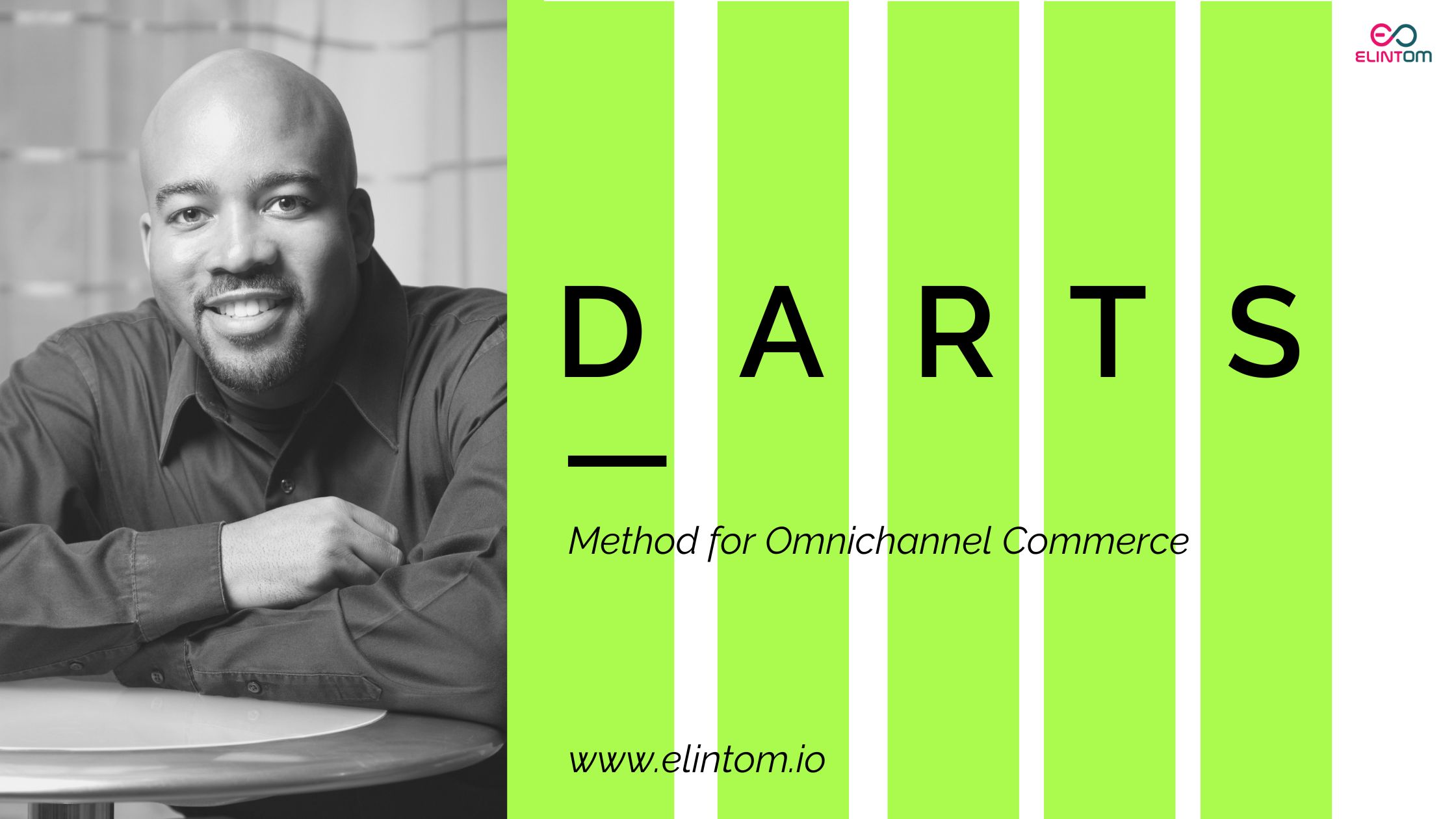Table of Contents

Are you struggling to create a centralized marketing hub that efficiently leverages data from various sources to drive omnichannel success? Imagine seamlessly integrating customer touchpoints, optimizing campaigns, and tracking performance in real-time. The D-A-R-T-S method offers a strategic framework to elevate your marketing game and achieve tangible results in today’s competitive landscape.
In this blog, we delve deep into the D-A-R-T-S approach, guiding you on how to:
– Gather and integrate diverse data sources for comprehensive insights
– Implement a collaborative environment for effective team alignment
– Optimize marketing campaigns across social media platforms and campaign platforms
– Track performance metrics, campaign goals, and effectiveness of various channels
– Achieve continuous growth through omnichannel commerce strategies
Unlock the potential of the D-A-R-T-S method to transform your marketing operations into a well-oiled, data-driven machine that fosters customer engagement, drives conversions, and ensures seamless scalability.
Introduction to Creating a Marketing Hub with D-A-R-T-S Framework
In today’s rapidly evolving business landscape, having a comprehensive marketing hub is crucial for driving growth and maximizing the impact of your marketing efforts. The D-A-R-T-S framework offers a strategic approach to building a successful marketing hub, enabling businesses to gather relevant data, integrate various sources, and track performance effectively.
The D-A-R-T-S framework consists of five key components: Data integration, Analysis, Real-time measurement, Tracking performance, and Seamless scaling. By leveraging these elements, businesses can unlock valuable insights, optimize marketing campaigns, and achieve continuous growth.
The first step in implementing the D-A-R-T-S framework is data integration. This involves collecting data from various sources, such as campaign platforms, social media, and website analytics, to obtain a unified view of your marketing efforts. Collecting data from these diverse sources provides invaluable insights into customer behavior, campaign effectiveness, and audience targeting.
Once the data is integrated, analysis plays a crucial role in understanding the collected information. By analyzing the data, businesses can identify trends, patterns, and opportunities for improvement. This data-driven approach allows for better decision-making, personalized marketing strategies, and improved campaign optimization.
Real-time measurement is another vital aspect of the D-A-R-T-S framework. It enables businesses to track performance metrics in real-time, ensuring that marketing campaigns are on track and delivering the desired results. By monitoring key performance indicators (KPIs) such as conversion rates, engagement levels, and ROI, businesses can make timely adjustments and optimize their marketing efforts for maximum effectiveness.
Tracking performance is essential for evaluating the success of marketing campaigns. By continuously measuring performance metrics, businesses can identify areas of improvement, refine targeting strategies, and allocate budgets more efficiently. Tracking performance also allows for better attribution modeling and helps businesses understand the impact of various marketing channels on customer acquisition and conversion.
Lastly, the D-A-R-T-S framework emphasizes the importance of seamless scaling and collaboration within the marketing team. Having a scalable infrastructure and a collaborative environment enable efficient resource use, better communication, and streamlined workflows. This cohesive approach ensures that the marketing hub operates efficiently, adapts to changes, and delivers a seamless shopping experience across different touchpoints.
By adopting the D-A-R-T-S framework, businesses can create a powerful marketing hub that drives growth and delivers tangible results. In the upcoming sections, we will delve deeper into each component of the framework, providing practical insights, best practices, and real-life examples to guide you in implementing the D-A-R-T-S framework for your marketing hub. So, let’s dive in and unlock the full potential of the D-A-R-T-S method for your business.
Understanding the Elintom D-A-R-T-S Framework
The D-A-R-T-S framework is a powerful tool for building an effective marketing hub. It consists of five key components that work together to drive success:
1. Data integration: Bringing together data from various sources, such as campaign platforms, social media, and website analytics, ensures a unified view of your marketing efforts.
2. Analysis: Once the data is integrated, analysis plays a crucial role in uncovering valuable insights that inform your marketing strategies.
3. Real-time measurement: The ability to measure and track performance metrics in real-time allows you to optimize your marketing campaigns and make data-driven decisions.
4. Tracking performance: Continuously monitoring and evaluating the performance of your marketing initiatives helps you identify what’s working and what needs improvement.
5. Seamless scaling: A scalable infrastructure and collaborative environment enable efficient resource allocation and better communication within your marketing team.
By leveraging the D-A-R-T-S framework, you can unlock the full potential of your marketing hub and drive continuous growth.
Data Integration and Insights
In today’s data-driven marketing landscape, the importance of collecting data from various sources cannot be overstated. By integrating data from sources such as campaign platforms, social media, and website analytics, marketers can obtain a unified view that provides valuable insights for effective marketing strategies.
Collecting data from different sources allows businesses to understand customer behavior, preferences, and engagement across multiple touchpoints. This holistic view enables marketers to tailor their campaigns and messaging to specific audience segments, maximizing the effectiveness of various channels.
Furthermore, the integration of data provides the foundation for data analysis, allowing marketers to uncover patterns, trends, and correlations that can inform decision-making. With a comprehensive understanding of customer interactions and preferences, businesses can optimize their marketing efforts and deliver personalized experiences that resonate with their target audience.
By leveraging data integration and gaining valuable insights, businesses can stay ahead of the competition, increase customer engagement, and drive better results. Embracing the D-A-R-T-S framework enables marketers to harness the power of data, making their marketing hub a strategic asset for growth.
API – Integrating Various Data Sources
To build a comprehensive marketing hub using the D-A-R-T-S method, it is crucial to effectively integrate data from various sources. By seamlessly combining data from campaign platforms, social media channels, and website analytics, you can gain valuable insights and optimize your marketing strategies. Here’s how you can successfully integrate different data sources:
1. Centralize your data: Collect data from your campaign platforms, social media channels, and website analytics into a centralized database or marketing platform.
2. Use data connectors: Utilize data connectors or APIs to extract and connect data from different sources, ensuring a unified view of your marketing efforts.
3. Implement data mapping: Align the data fields from different sources to ensure compatibility and consistency.
4. Leverage automation: Consider using automation tools to streamline the integration process and ensure real-time data synchronization.
5. Regularly update data: Continuously update and refresh your data to maintain accuracy and relevance.
By effectively integrating your data sources, you can harness the power of the D-A-R-T-S framework and make data-driven decisions for your marketing campaigns.
Real-time Measurement
Real-time measurement and tracking performance are essential components of building a successful marketing hub. By consistently monitoring and analyzing key performance metrics, businesses can optimize their marketing campaigns and achieve continuous growth. Here’s why real-time measurement and tracking performance are crucial:
1. Optimizing Marketing Campaigns: Real-time measurement allows businesses to make data-driven decisions and adjust marketing strategies on the go. By monitoring metrics such as click-through rates, conversion rates, and engagement levels, marketers can identify underperforming areas and implement immediate improvements.
2. Identifying Trends and Opportunities: Tracking performance metrics in real-time enables businesses to detect emerging trends and capitalize on new opportunities. Whether it’s adjusting ad bidding on a social media platform or leveraging customer insights to launch a successful email campaign, real-time measurement empowers marketers to stay ahead of the competition.
3. Continuous Growth: Real-time tracking performance ensures that businesses can quickly identify areas for improvement and adjust their marketing efforts accordingly. By constantly monitoring performance metrics, marketers can iterate and optimize their campaigns, driving continuous growth and maximizing return on investment.
Tracking Performance
Businesses can utilize various tools, such as analytics platforms, campaign dashboards, and conversion tracking systems, to effectively measure real-time performance. By leveraging these resources, marketers can make data-backed decisions and drive their marketing initiatives towards success.
Seamless Scaling and Collaboration
Building a marketing hub that can seamlessly scale and foster collaboration within the marketing team is essential for long-term success. A scalable infrastructure allows for efficient resource use and accommodates growth without disruption. It provides integration support for new data sources, such as social media platforms, CRM systems, and campaign platforms. Collaborative strategies are crucial for better communication and collaboration, enabling the team to work together seamlessly. A shared dashboard and a collaborative environment facilitate the alignment of goals and optimization of marketing campaigns. By fostering collaboration, marketers can leverage diverse perspectives and expertise, resulting in improved campaign effectiveness and a seamless shopping experience for the customer.
ElintOm Case Study: Successful Implementation of the D-A-R-T-S Framework
One remarkable example of a successful implementation of the D-A-R-T-S framework in creating a marketing hub by ElintOm is for the renowned software company, XYZ Solutions. By leveraging the power of data integration, analysis, real-time measurement, tracking performance, and seamless scaling, XYZ Solutions has transformed its marketing strategy and achieved remarkable results collaborating with ElintOm.
Data Integration and Insights
XYZ Solutions recognized the importance of collecting data from various sources to gain a unified view and valuable insights for their marketing strategies. With ElintOm commerce platform they integrated data from multiple channels, including their campaign platforms, social media platforms, and website analytics. By consolidating and analyzing this data, they gained a comprehensive understanding of their customers’ behaviors, preferences, and engagement levels.
Real-time Measurement and Tracking Performance
Real-time measurement and tracking performance metrics played a vital role in optimizing marketing campaigns and achieving continuous growth for XYZ Solutions. ElintOm team closely monitored the effectiveness of various channels and touchpoints, allowing them to make data-driven decisions to improve customer engagement and increase conversions. This enabled them to allocate their budget more efficiently and focus on activities that generated the highest conversion rates.
Seamless Scaling and Collaboration
XYZ Solutions ensured they had a scalable infrastructure and fostered a collaborative environment within the ElintOm marketing team. This allowed for efficient resource use and better communication and collaboration among team members. By implementing shared dashboards and integrated CRM systems from ElintOm, they were able to streamline workflows and enhance collaboration, leading to seamless scaling and improved campaign outcomes.
By implementing the D-A-R-T-S framework from ElintOm, XYZ Solutions successfully transformed their marketing hub into a data-driven powerhouse. They experienced significant improvements in customer experience, campaign effectiveness, and overall marketing ROI. By continuously analyzing and leveraging data, XYZ Solutions remains at the forefront of their industry, continuously refining their marketing strategies and driving business growth.
*Note: The company mentioned in this case study is fictional and used for illustrative purposes only.*
Conclusion
In conclusion, the D-A-R-T-S framework by ElintOm offers a comprehensive approach to building a successful marketing hub. By following the key components of this framework – data integration, analysis, real-time measurement, tracking performance, and seamless scaling – businesses can unlock the power of their marketing efforts.
Data integration plays a crucial role in gaining valuable insights from various sources, allowing marketers to make informed decisions. Real-time measurement and tracking performance metrics enable continuous optimization of marketing campaigns, leading to better results and growth.
Having a scalable infrastructure and a collaborative environment facilitates efficient resource use and better communication within the marketing team. This framework has been successfully implemented by various companies, driving their marketing strategies and achieving remarkable results.
Incorporating the D-A-R-T-S method in creating your marketing hub will not only streamline your campaigns but also ensure a seamless shopping experience for your customers. Embrace the power of the D-A-R-T-S framework and take your marketing efforts to new heights.
Remember, building a marketing hub is a continuous process, and the D-A-R-T-S framework will serve as your trusted guide on this journey of success.

